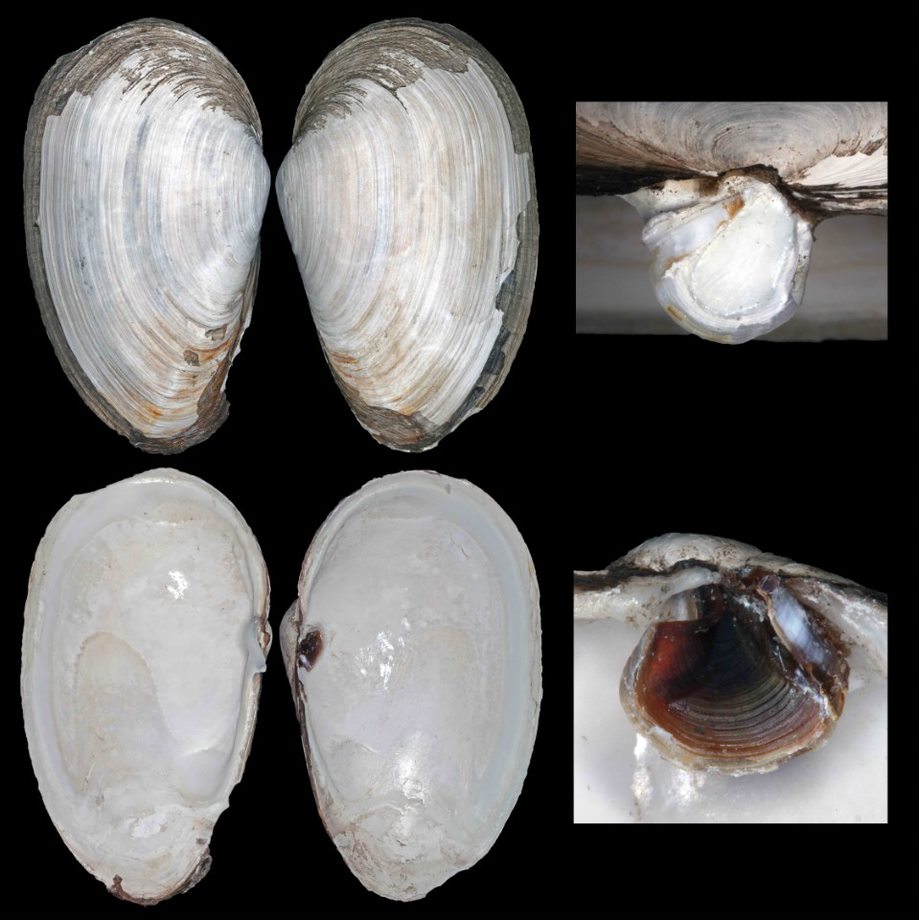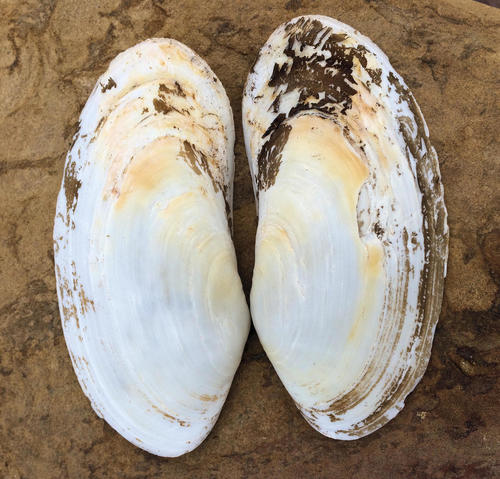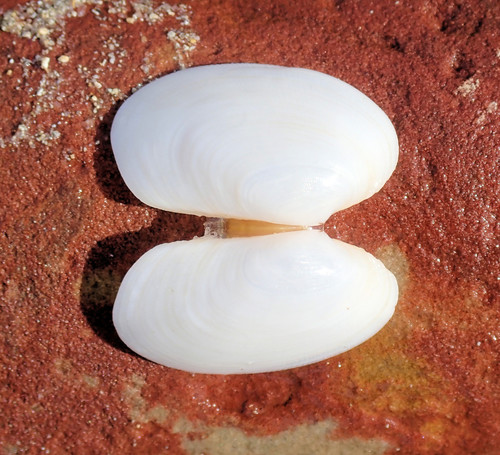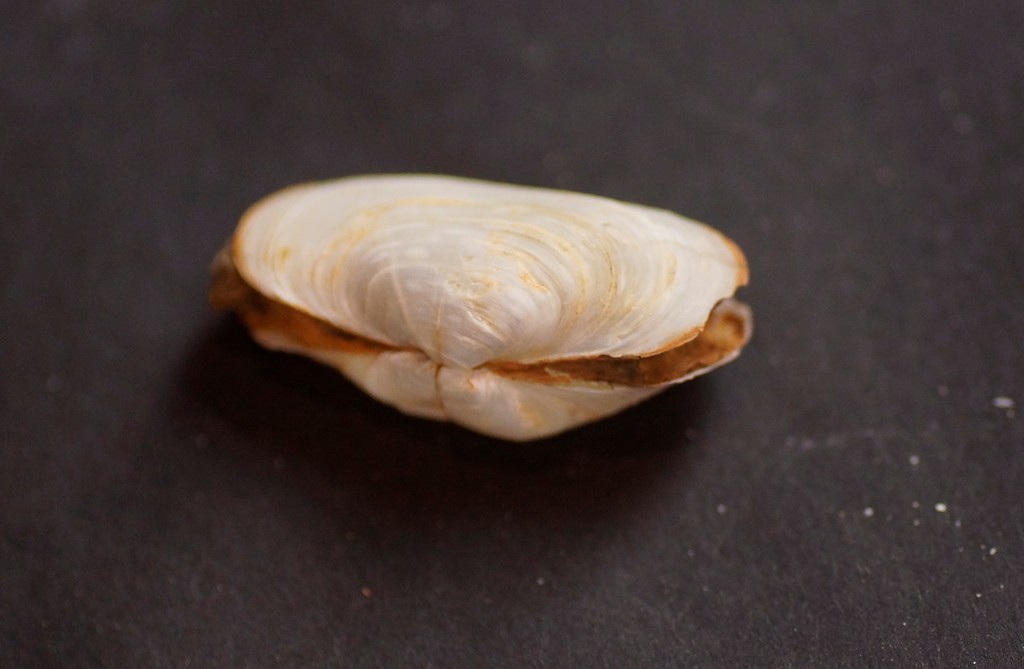Soft shell clam
Soft shelled clams (Mya japonica) are a large marine bivalve native to the northern hemisphere. In 2018 they were detected in eastern Tasmania having not previously been detected in Australia or other parts of the southern hemisphere.
They are considered an invasive species of concern due to their potential to outcompete native species for habitat.
The Soft shelled clam is listed as notifiable matter under the NSW Biosecurity Regulation 2017 and is considered a major threat to native fauna and the environment. It may not be brought into NSW or released or allowed to escape into any waters in NSW and any person suspecting the presence of Soft shelled clam is required to notify an Authorised officer.
Reporting
If you think you have seen Soft shelled clam in NSW, please take several clear, high resolution photos of the clam. For identification, we need to see the:
- Shell hinge showing difference in two valves
- Shell colour and growth lines
- Gapes at both ends when closed
- Shell shape (thin and oval)
Please send photos to aquatic.biosecurity@dpi.nsw.gov.au, along with details of when and where the clam was seen.
Identification
 Key features:
Key features:
- Chalky white, rough shell (may be discoloured in black or red mud)
- Valves are different – one side has a large scooped out projection at the hinge, the other has a pit
- Shell shape thin and oval
- Gape at both ends when closed
- Uneven growth lines
- Grows up to 15cm
Known locations:
- Eastern Tasmania
Habitat:
- Buried in mud, sand, gravel.
- Lower intertidal and subtidal areas, and in estuaries.
Vectors:
- Spread via vessels ballast water (larvae) and people illegally releasing adults
Impacts:
- Competes with native clams for space
- Reduces food availability for oysters, mussels and scallops
- Change sediment composition affecting bottom dwelling communities
Similar native species
These native species may be confused with the Soft shelled clam. These species do not need to be reported.
 Gaper clam (Lutraria rhynchaena)
Gaper clam (Lutraria rhynchaena)
Key features
- Off white shell, often covered with a brown skin
- Solid elongated shell
- Gapes when shut
- Concentric (fine evenly spaced) ridges
- Up to 12cm long
Known Locations
- NSW, Vic, Tas, SA and southern WA
Habitat
- Mud, sand and sheltered shores
Venus cockle (Venerupis galactites)
Key features
- Solid white shell
- Identical valves that close completely
- No scooped-out projection
- Up to 5cm long
Known Locations
- NSW, Vic, Tas, SA and southern WA
Habitat
- Sandy shores
- Bays, estuaries and sheltered coasts
Lantern/Gaper shell (Laternula recta/rostrata)
Key features
- White in colour
- Elongated shell
- Gapes at both ends when closed
- Concentric (fine evenly spaced) ridges
- Up to 6cm long
Known Locations
- NSW, Vic, and SA
Habitat
- Mud
- Sand